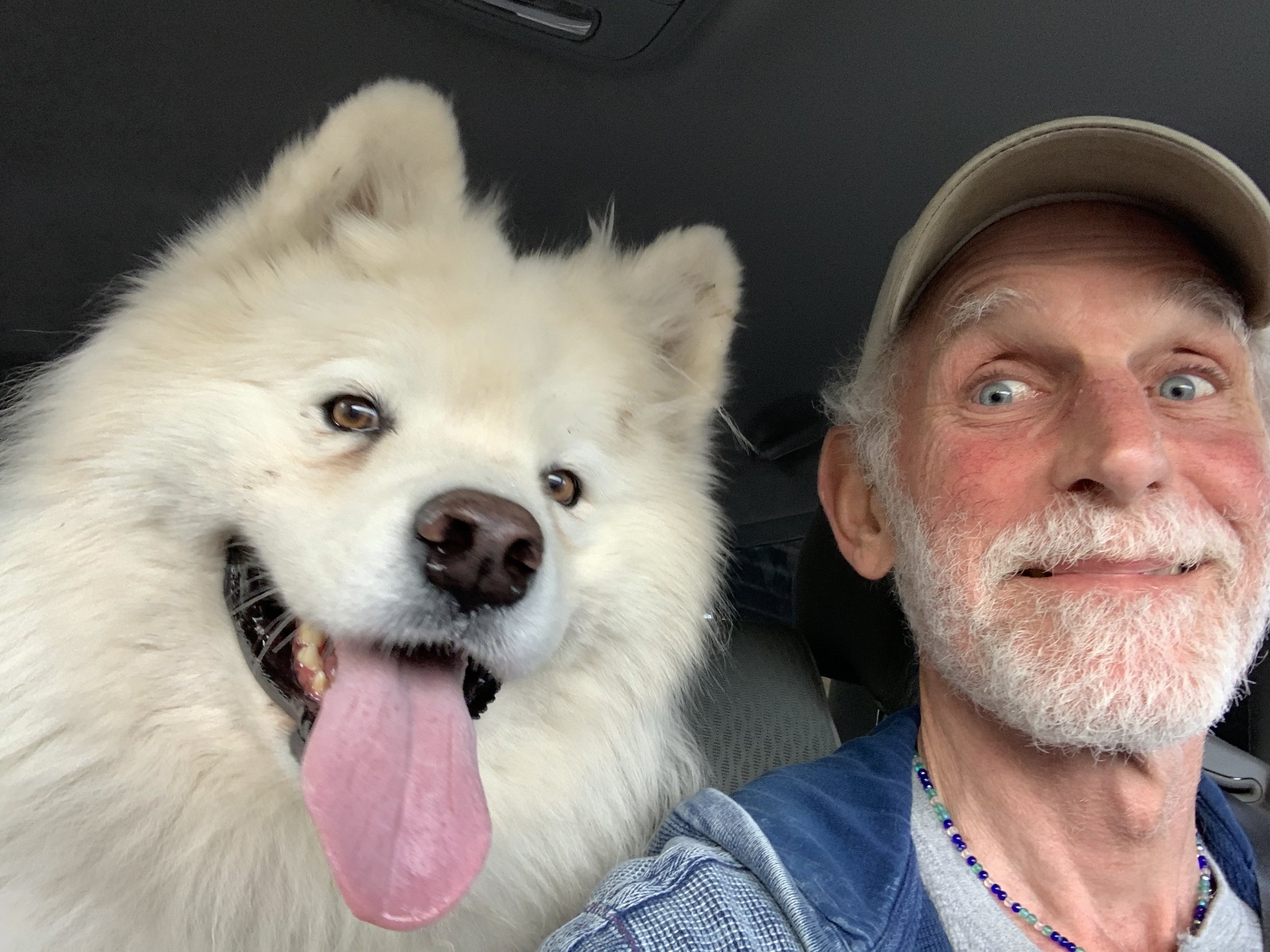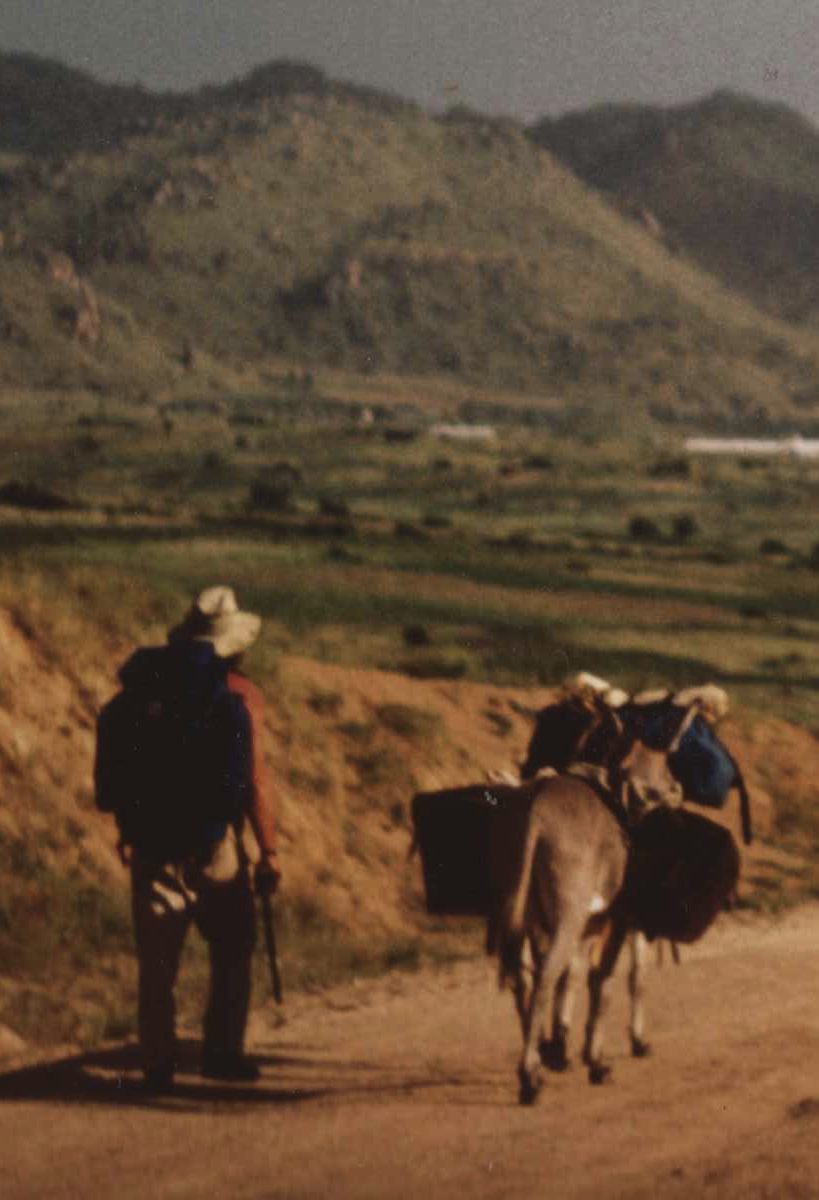Patrick.
Master Pretzel Baker, Arborist, Human Rights Activist
Patrick grew up as the fifth child (of six) in an amazing Italian-American family and the child hours were full of wild lands and animals. His Italian Grandma, Theresa, was a baker and passed the tradition on to the entire family. Patrick watched, learned and helped her. His love for baking became a fixture in his life.
A Little More About Patrick
Patrick has always lived life large and for more than 30 years, fought for human and environmental justice, representing the legal cases of asylum seekers seeking protection in the U.S.
While traveling the world, Patrick's life of activism became firmly rooted as he found himself in northern Kenya in 1979. Northern Kenya (and Ethiopia) was in the midst of a famine that most of the world was unaware of or had ignored. His life changed forever. In that moment, he had a painful realization that he couldn't do much to save the lives of those dying before him. But he committed that he would do all he could to help, in some small way, the lives of the impoverished or disenfranchised.
In 1980, after traveling the world and witnessing the injustice of food insecurities, poverty and famine, Patrick was back home in the trees and a dream and a vision becomes reality and a lifelong commitment.
Patrick and brother Gary pruning a Storm Damaged White Oak
Patrick and his brother, Gary, had trained (under old-timer arborists) and worked as arborists and tree climbers since the early 1970s. While working together in the trees near Woodstock, New York (after Patrick returned from his first trip around the world and to Africa), Patrick told Gary that he had been having dreams about walking the African continent. At the same time, Patrick had become active working on hunger and poverty issues. Working together in the top on an old White Oak, Gary responded, "Well, go ahead then, you're dreaming about walking Africa and working on hunger issues!" In that moment, the dream became reality and Patrick decided to walk across Africa to investigate, highlight and impact, in some small way, hunger, injustice and worldwide poverty. Patrick's Walk was born.
Patrick's Walk
Patrick and his donkeys Nyagah and Xerox in Tanzania in 1985
In January, 1984, "Patrick's Walk" began as a physical action (walking from east to west Africa) to highlight the plight and affect change for the world's poorest people.
Patrick had also forged relationships with UNICEF and other child welfare organizations and was developing very basic resources/information for villagers on health concepts for women and children. Patrick worked closely with UNICEF and the Ministries of Health in Kenya and Tanzania, as well as many non profits and villagers, on the development of this basic information. With his two donkeys Nyagah and Xerox, Patrick carried thousands of the teaching resources. He worked with villagers to make the resources more relevant and appropriate for them.
Patrick with one of the hundreds of families that hosted him along his journey
As early as the first days of the journey in 1984, Patrick realized the true meaning and impact of the Walk was not going to be about his desires to help Africa. Instead, it was more an immersion into African communities so that he could learn from them (learning languages, cultures and Africans aspirations and designs for their own future)- and bring those lessons back to his own country and communities (understanding the enormous impact that the U.S. has on other countries and communities - especially during the Cold War).
As the Walk progressed and Patrick lived in villages in East and Central Africa, he began to understand more clearly the complex reasons underlying poverty around the world. The history of colonization, slave trade, exploitation of the continent's resources by richer nations, and foreign policies of countries like the U.S. that were designed to undermine the aspirations of newly independent African nations. Also, the Cold War between the U.S. and the Soviet Union ravaged the African Continent.
Patrick spent almost five years walking and living in the villages of East and Central Africa. The villages were his lifeline. The villagers were his teachers.
Footsteps Into Change
A Humbling African Odyssey
In 1992, flanked and supported by many African friends he had met along the journey, Patrick premiered "Footsteps Into Change - A Humbling African Odyssey". Over the next several years, he presented Footsteps at more than 250 colleges and universities.
"This is the best description I have seen on the African People, their ways of living, their physical environment, their concerns and ambitions, their potential, and their role in international politics and economics. The strength of this overview is achieved thanks to the method of research used by Patrick: living the life of the people, and conducting the study as a student, not as an expert."
Congolese Community Development Worker - 1992
After finishing his Walk in 1989, Patrick returned to the U.S. and moved to Vermont to be near friends. He spent two years compiling his photos, sound recordings and journals into an iconic multimedia presentation called FOOTSTEPS INTO CHANGE - A Humbling African Odyssey.
FOOTSTEPS INTO CHANGE is a dynamic multimedia experience that takes participants through several levels of African reality. The show IS about hunger and poverty, BUT it is mostly about the African people's robust resilience and creative community response to these challenges. The show IS about environmental depredation, BUT through visual and narrative storytelling, it personalizes the complexities underlying these environmental issues.
FOOTSTEPS is a stunning, moving and thought-provoking experience that uses nine slide projectors (remember them?!), three huge screens and a soundtrack that incorporates Patrick's photos, sound recordings and interviews with music from those parts of Africa where he walked. Between 1992 and 1998, Patrick presented FOOTSTEPS INTO CHANGE to more than 250 universities and colleges - some several times or every semester. Every campus visit was combined with class visits and meetings with students and student groups to probe issues related to affecting change for poverty and injustice.
While Patrick was touring with FOOTSTEPS INTO CHANGE and living in Vermont, he began to use his language skills to work with clients of Vermont Refugee Assistance.
Vermont Refugee Assistance
Mohamed Cherfi, Michel Mamenga, Patrick, Michele Jenness
Patrick served as executive director of Vermont Refugee Assistance for 16 years.
During this time, Patrick worked on national and international advocacy efforts for the rights and welfare of asylum seekers, and he directly represented the legal asylum cases of individuals seeking asylum in the United States. In 2010, Patrick testified before the U.S. Senate Judiciary Committee in support of the Refugee Protection Act.
Patrick and Karen Fondacaro co-founded NESTT in 2008
NESTT - New England Survivors of Torture and Trauma
By 2008, Patrick had been representing the legal cases of asylum seekers for many years - most of whom were torture survivors. He listened to their stories, represented their legal cases and witnessed the critical needs for torture survivors who were applying for protection (asylum) in the United States. For a few years, he organized meetings of refugee service providers to address the needs of torture survivors living in Vermont. Finally in 2008, Patrick and Karen Fondacaro, PhD psychologist and University of Vermont faculty, co-founded NESTT - the New England Survivors of Torture and Trauma. The goal and mandate of NESTT is to provide legal, psychological, social and physical services to torture survivors living in Vermont.














